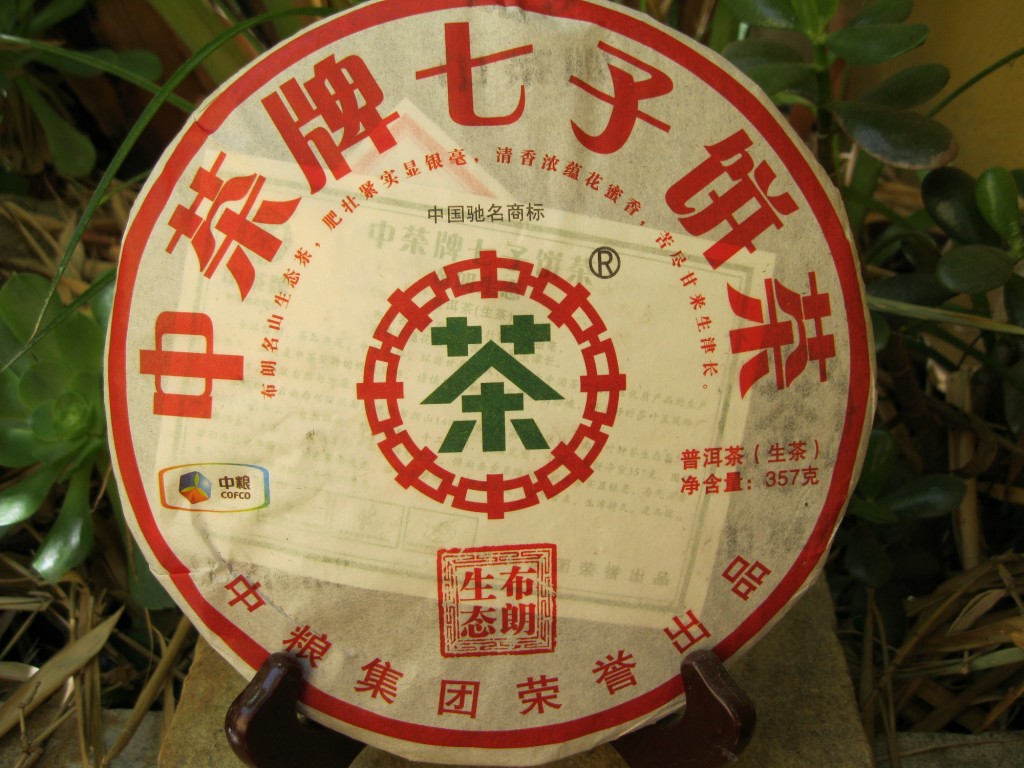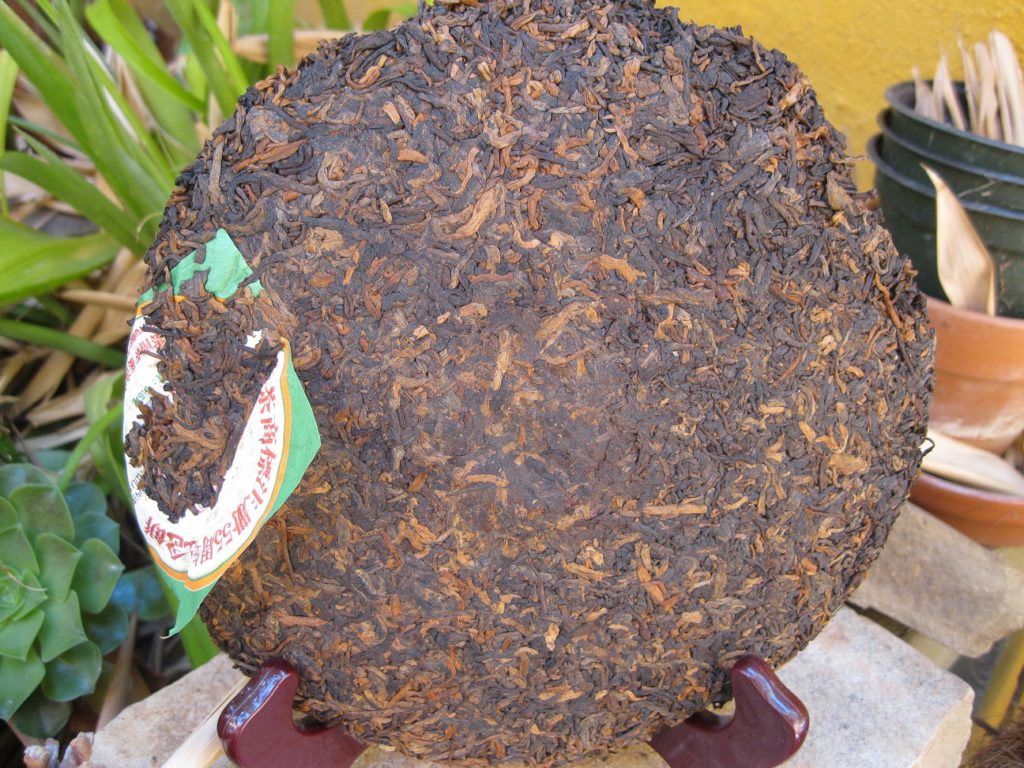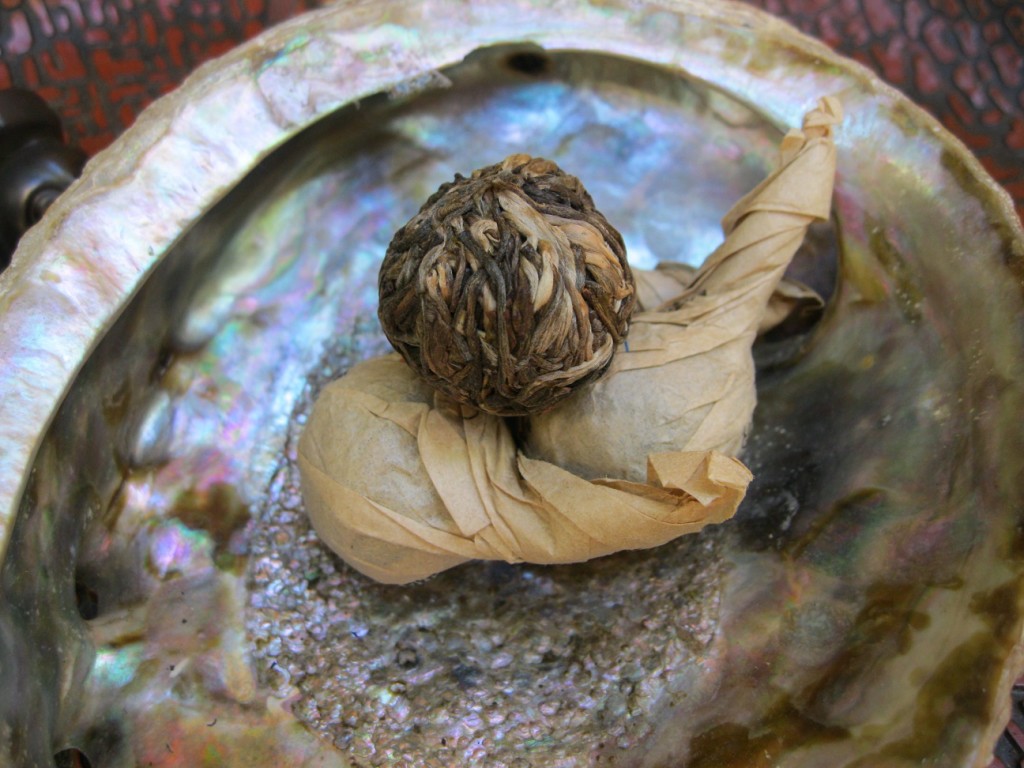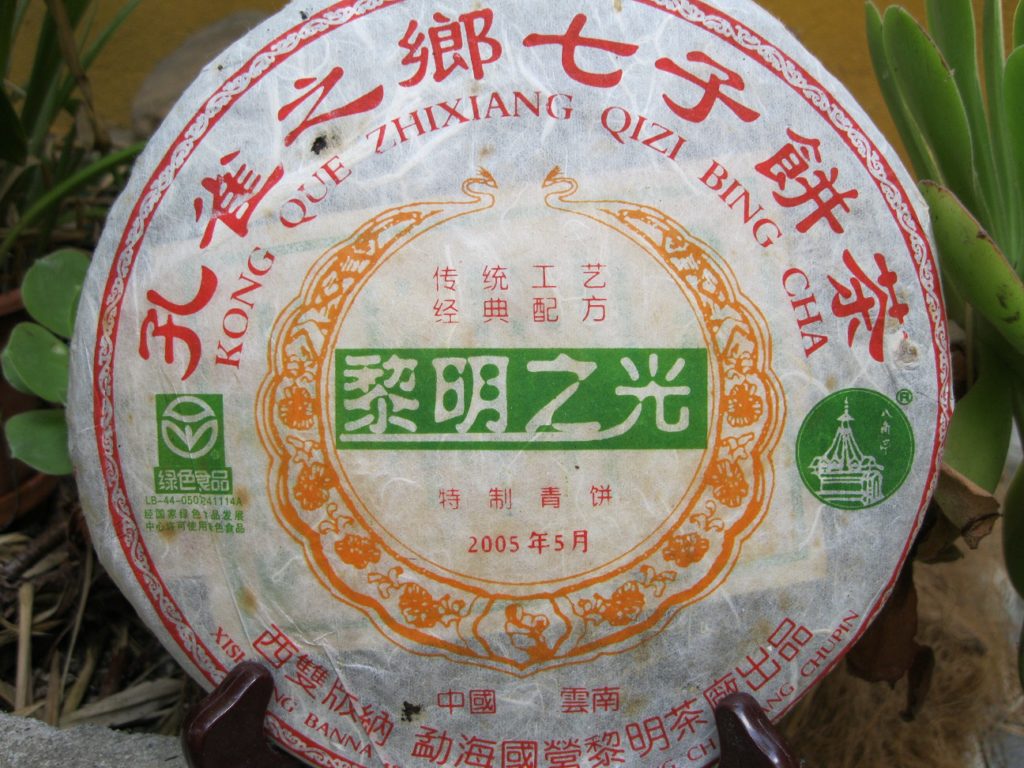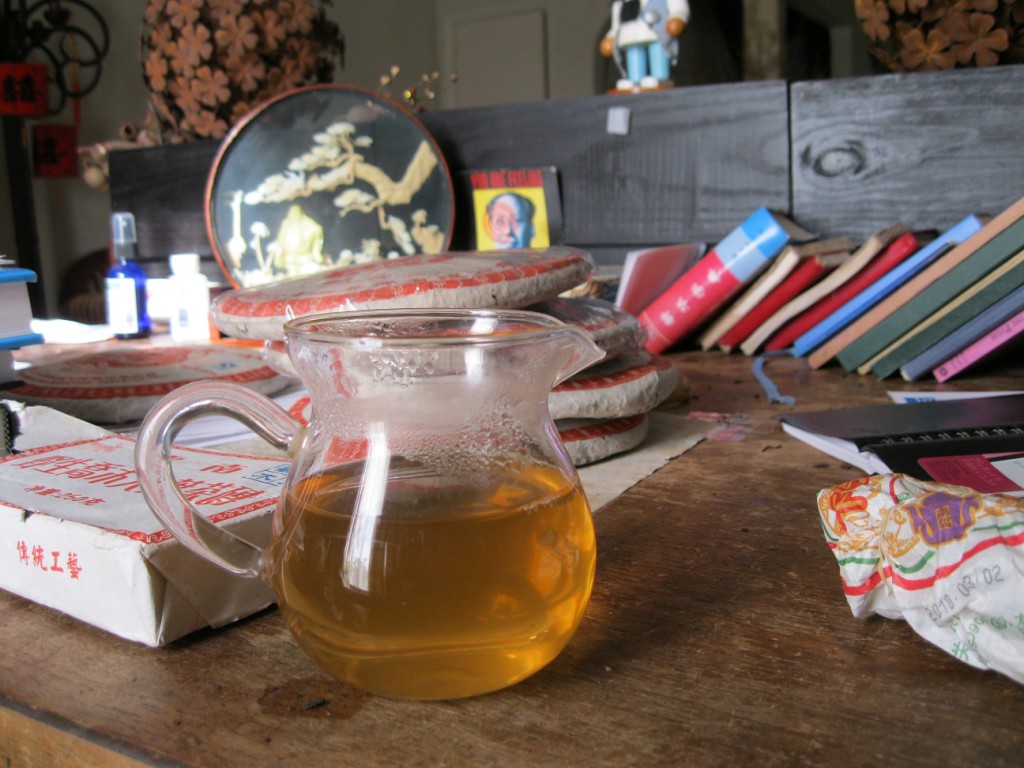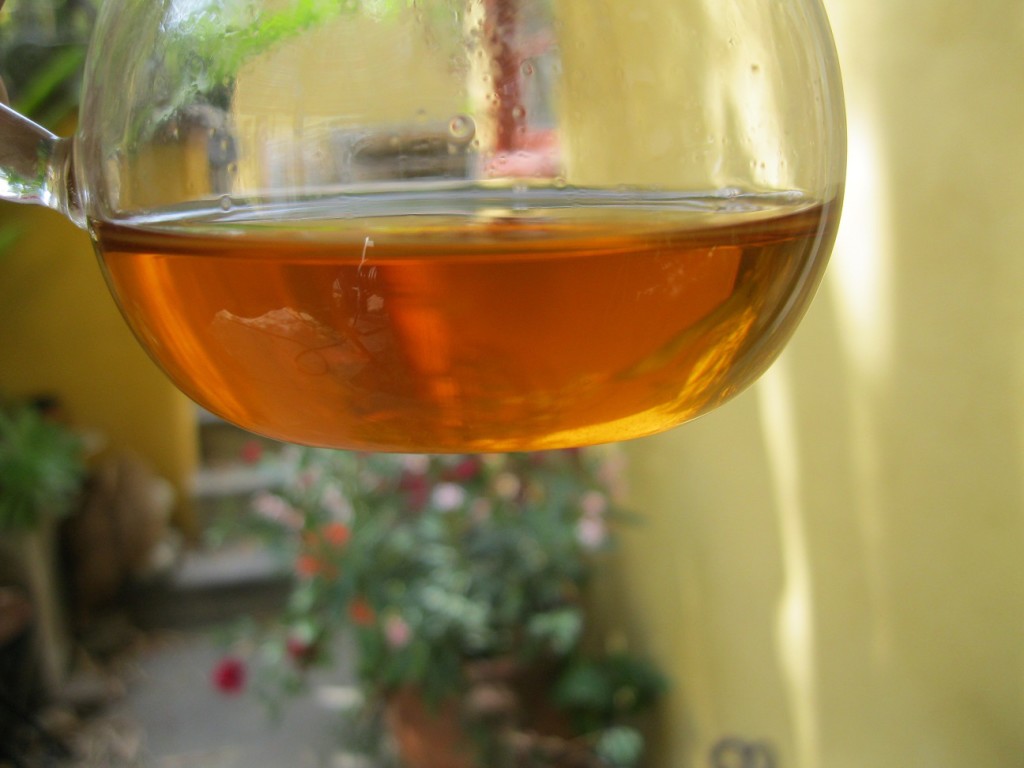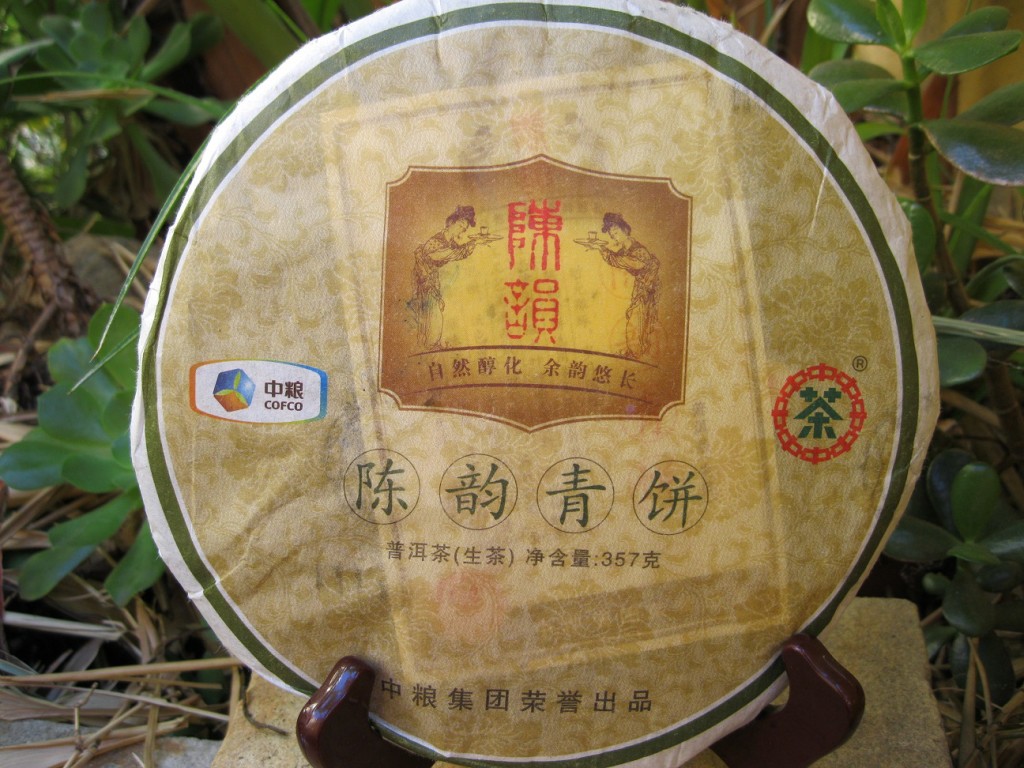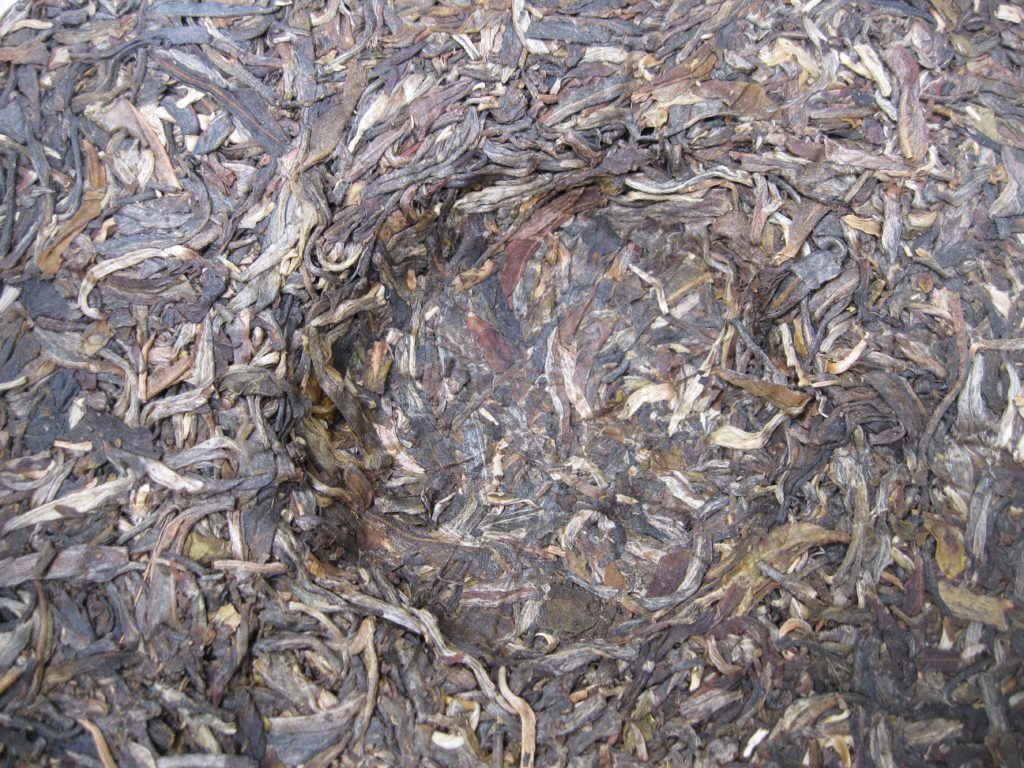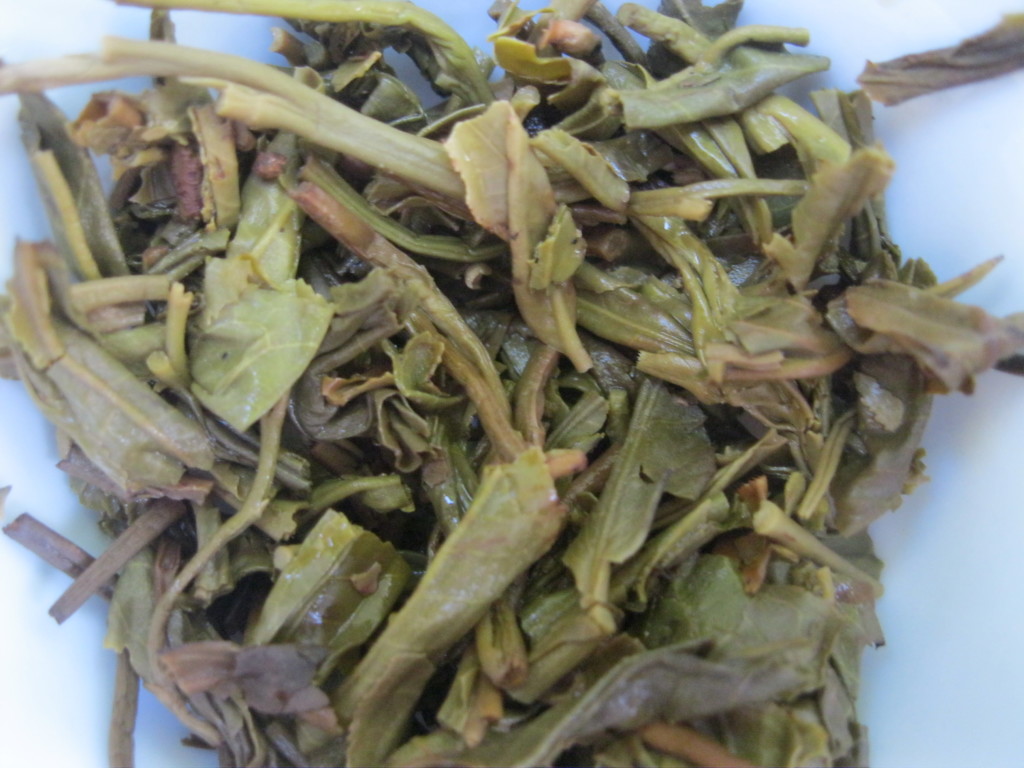2013 Bulang Shengtai, Zhongcha
After a weekend in the Cangs, I thought I’d make my way over to the Langs. I went for the 2013 Bulang Shengtai, by Zhongcha. It is a light tea. It is not what could be considered rich, thin actually. Seems like it might be good for a hot summer day. Sometimes green tea is referred to as “qing cha”, which is also a reference to the effect and bright and lightness of the tea itself. This is very much a qing cha.
Overall this production possesses two Zhongcha traits, one common among the older productions I’ve been exposed to and one among the younger. Many of the older Zhongchas, say from ’07 are super mellow. A kind of crayola taste might come through in the first infusions. Subsequent infusions don’t give any marked sensation. Many of the younger productions have a kind of non-bitter astringency that is very dynamic in the mouth. It is fresh and lively. The very best expression of this is the HK Returns brick, which is super dense. A good example of the former is Bulang cake ’07, which is loosely pressed.
It tastes like fragrant water that has a deceptively strong and long aftertaste, which is very pleasant. Pushing the leaves only gives rise more intensely sweet fragrant water. It is of the typical chopped-leaf material that comprises the hallmark productions from the 90s coveted by the Chinese market in particular. In a few years the crayola will come in but for now it is qing cha in every sense of the word.

